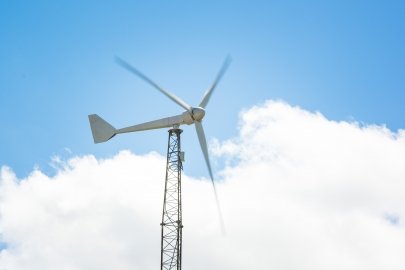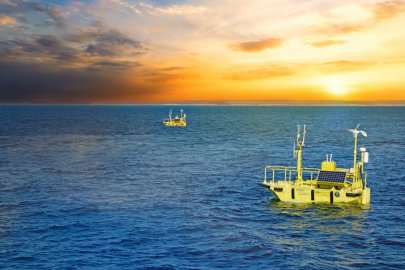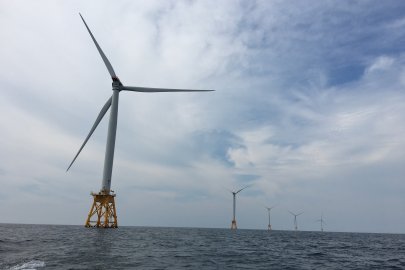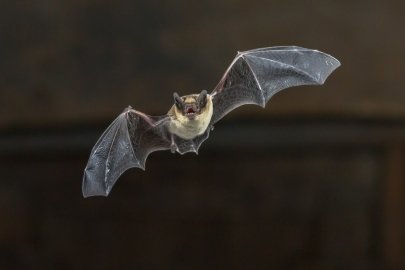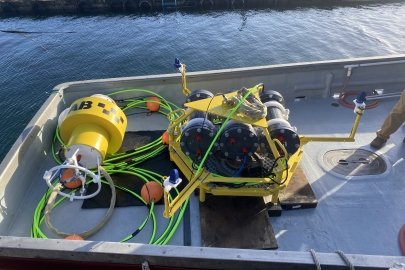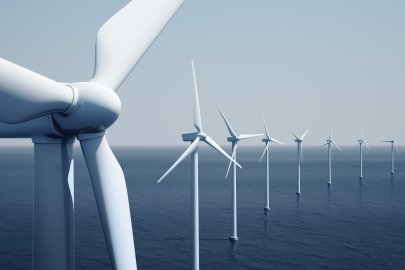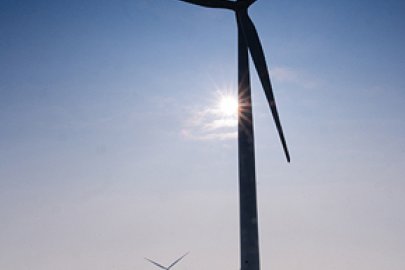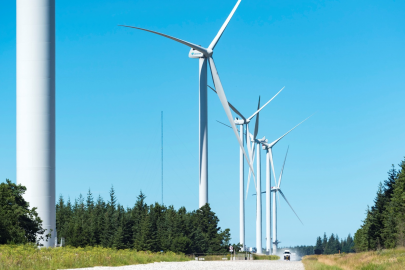Wind repowering—the combined activity of dismantling or refurbishing existing wind turbines and commissioning new ones—plays an important role in the wind industry by modernizing the existing wind fleet and helping maximize wind energy use.
Wind Energy Technologies Office
June 2, 2021Research findings highlight motivations behind wind power’s second act
Wind energy is already a major contributor to the U.S. energy system (9.2% of all electricity in 2020) and is expected to become even more so in the future. Boosted by advancing technology, economies of scale, and plummeting costs, the U.S. industry had an exceptional year in 2020, with wind power capacity additions of 14.2 gigawatts (GW).
Although new wind power plant plans and installations dominate headlines, wind repowering—the combined activity of dismantling or refurbishing existing wind turbines and commissioning new ones—also plays an important role in the industry. By modernizing the existing wind fleet, repowering sets the stage for future wind industry and helps maximize wind energy use.
Recognizing this potential, several members from the International Energy Agency Wind Technology Collaboration Programme–Task 26, Cost of Wind Energy—led by the National Renewable Energy Laboratory (NREL), with funding from the Wind Energy Technologies Office—published an article in Nature Energy that explores the drivers influencing onshore wind energy repowering decisions.
Upsides of Wind Repowering
Wind repowering enables owners to retrofit power plants on existing sites with new and/or refurbished technology, including erecting taller, more efficient wind turbines to increase productivity. Repowered projects can often gain further cost-saving advantages, relative to new greenfield (or vacant-lot) developments, by using existing grid connections and infrastructure.
“Most studies focus on the technological, economic, and regulatory influences of wind repowering with an eye to on-site considerations at a wind power plant,” said Eric Lantz, NREL researcher and IEA Wind Task 26 operating agent. “However, this misses critically important social and environmental considerations. For wind energy to serve as much as one-third to one-half of our electrical energy needs, we need to understand the varying combined and competing factors at play in wind repowering decisions.”
Denmark Shows the Way
To understand the drivers behind wind repowering decisions, the IEA Wind study looked to Denmark for insights on wind repowering decisions. Denmark has one of the oldest wind turbine fleets in the world and its wind industry makes up 47% of the country’s annual electricity production. Factors affecting wind repowering decisions are shown in the accompanying illustration.
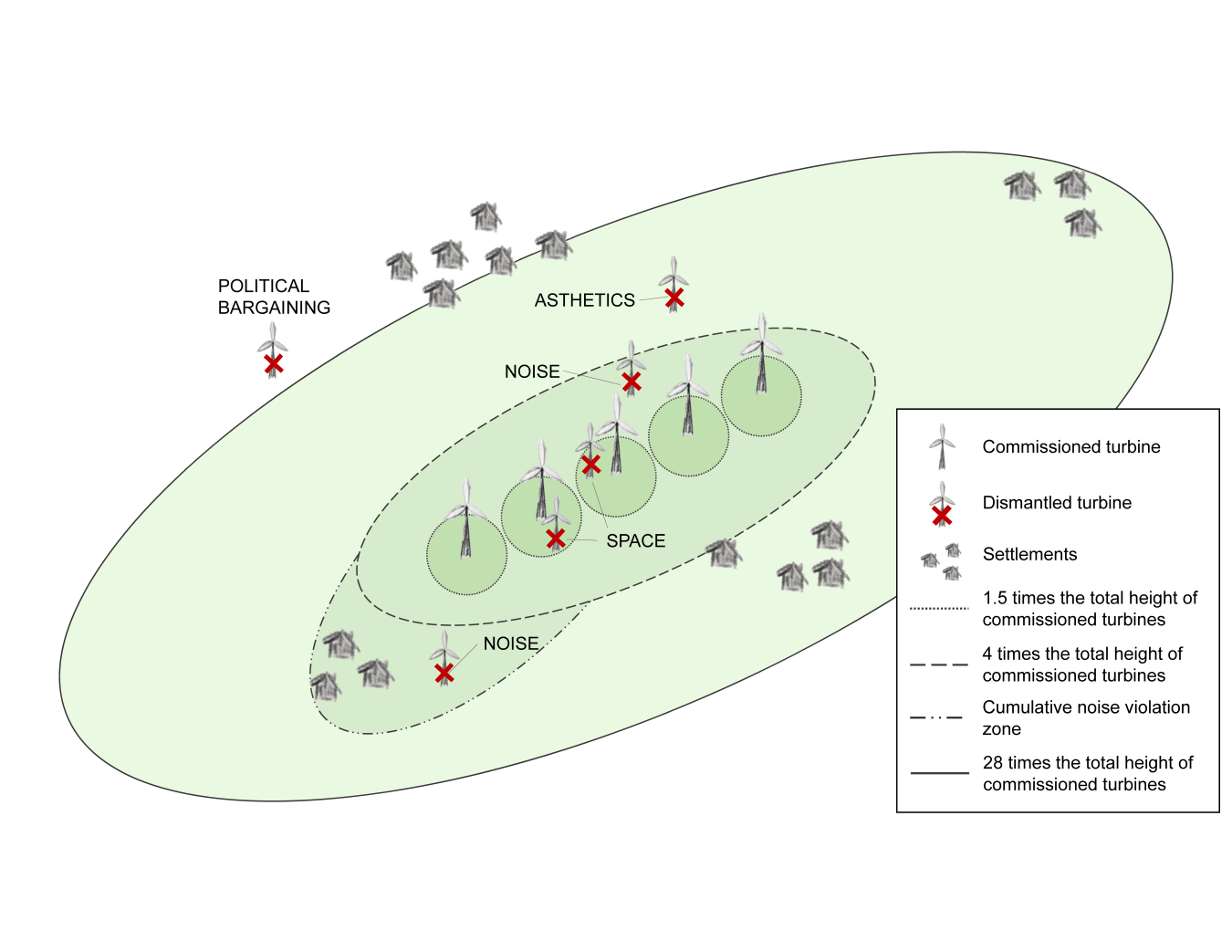
This fictional Danish repowering wind energy project demonstrates common reasons for wind repowering decisions, including zones of construction for new wind turbine projects based on their size relative to the existing commissioned turbine (600 kilowatts in this case). Graphic by L. Kitzing and M. K. Jensen, Technical University of Denmark. First published in Kitzing et al., 2020, Nature Energy
The study found that, between 2012 and 2019, 38% of wind energy projects in Denmark were classified as repowering projects. In 2019, the final year in which the data were analyzed, repowering market share in Denmark jumped to an unprecedented level of 86% of gross added capacity and 87% of added wind turbines. This development heralded repowering as a major future funding activity, as markets mature in the United States and around the world.
For this same time period, net capacity additions from repowered projects totaled 576.8 MW. Considering both greenfield and repowered wind energy projects, Denmark saw a 1.3 GW gain in capacity and a reduction of 109 wind turbines, enabling substantially increased wind energy production with fewer turbines.
While increased capacity from fewer wind turbines may seem counterintuitive, newer turbines tend to be taller, more efficient, and more cost effective. With the productivity gains of newer turbines, power plant owners were able to replace older and smaller turbines with fewer modern wind turbines and generate the same or even more power.
Moreover, the study found that replacing old wind turbines had other benefits beyond cost and productivity gains, including decreased noise and the potential to lessen impacts to local wildlife.
Catalysts for Wind Repowering
Through a series of interviews with Danish wind power plant developers, the Task 26 research team uncovered motivations for wind repowering decisions. Land access was the primary reason cited by developers for repowering decisions.
“In our interviews, developers mentioned that prime real estate for wind development was already taken,” said Technical University of Denmark Wind Energy’s Lena Kitzing, the study’s lead author. “While many regions have plentiful wind resources, siting decisions and competing land-use needs can make it difficult to find new places to build. So, it makes sense to take advantage of the space you have by putting in newer, improved technology.”
Other reasons for repowering include reducing noise and better aesthetics. None of the wind developers interviewed named profitability as a primary incentive.
These results demonstrate the nature of repowering as a negotiated process between wind developers and the host communities that takes time, energy, and resources. This work also shows the potential for repowering funding to deploy newer, more advanced technology that can offer energy-generation benefits to society while also lessening the impacts of wind energy on local communities.
“For future wind energy gains to take hold, we need to incorporate community insights into the construction and refurbishment of new wind power plants,” Lantz said. “It’s a key piece to the puzzle that helps unlock a future where wind becomes a predominant source of power.”
Subscribe to learn more about WETO R&D projects, news, accomplishments, and recent publications.
Subscribe to the WETO e-newsletter to stay informed on the latest wind energy news, events, publications, and updates.


